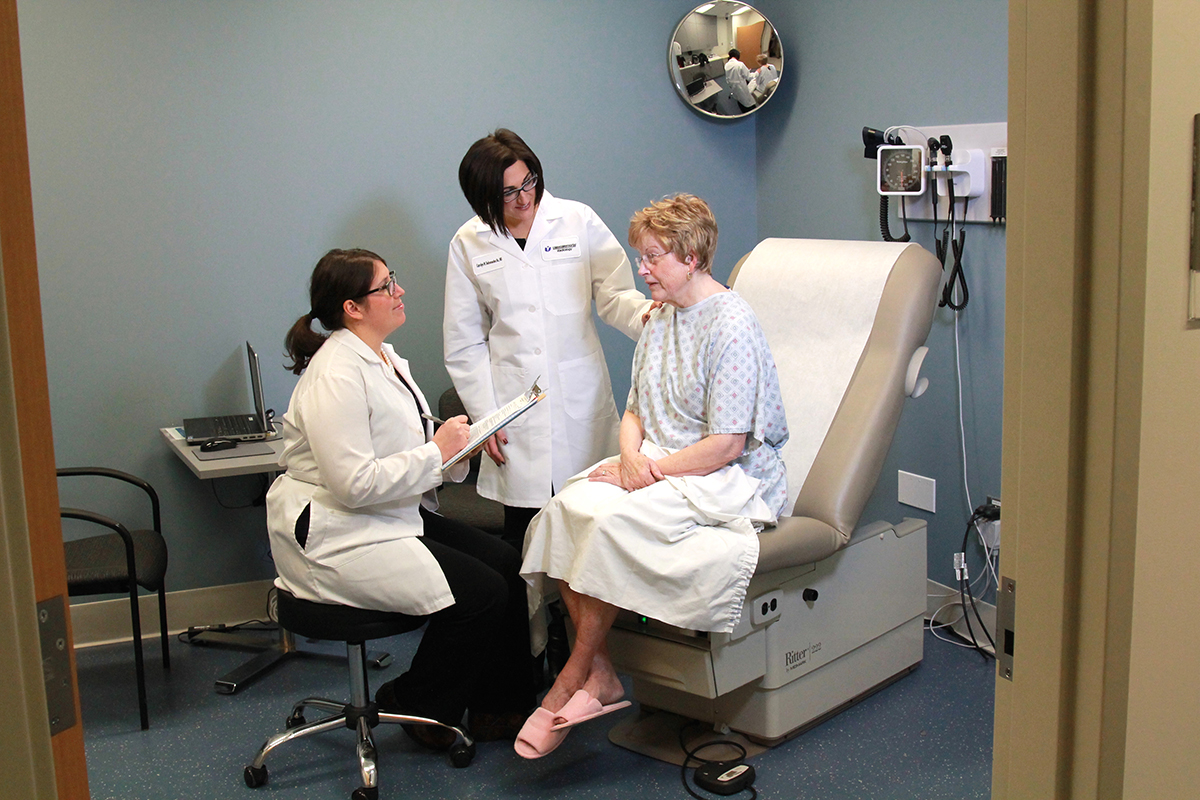What It’s Like to Be a Standardized Patient

Davis in a standardized patient appointment. Photo provided by UMass Medical School
When Sarah Davis pretends she’s sick, she’s not avoiding her job—she’s doing it.
For the last 16 years, Davis has been part of UMass Medical School’s (UMMS) standardized patient program, through which healthy people simulate every aspect of the patient process to help medical students learn.
“We are helping medical school students improve their communication skills,” Davis says. “It is very important to us that they are not only good doctors, medically, but good communicators.”
An average standardized patient appointment, by definition, goes just like a standard medical appointment. The patient—many of whom come from acting or medical backgrounds, or have experienced medical problems personally—is assigned a particular condition or disease, and then embodies every aspect of it. They ask questions like a real patient, communicate like a real patient, and challenge doctors like a real patient, giving students hands-on practice for difficult cases they’ll encounter in the future.
“The cases that we’ve developed for standardized patients commonly involve situations that are always challenging and difficult to talk about,” explains Senior Associate Dean for Educational Affairs Michele Pugnaire. “Things like breaking bad news to a patient, giving them a diagnosis, screening for things that we call stigmatized conditions.”
No appointment is off limits for standardized patients—they even subject themselves, voluntarily, to intimate visits like breast and genital exams. Davis, who says acting short of breath is the most difficult skill to act out, remembers one particularly difficult case she performed with her husband, a fellow standardized patient.
“There was a case called ‘Confused Elderly Patient’ when I was bringing my husband in to the doctor because he seemed very confused,” she says. “He wasn’t too pleased with that case.”
Standardized patients are an integral part of medical education now—UMMS has even begun using them to help combat the opioid crisis—but when the school started using them in the ’80s, it was a relatively novel idea. That long history has kept UMMS at the forefront of the practice, developing new programs and training patients who will eventually work with other medical schools.
Pugnaire says that, while some patients are interested in medicine, many are attracted to the program simply out of goodwill. “When I ask them, ‘What motivates you?,’ they say, ‘I’m doing it because I want to make sure patients get good care,'” she says.
Davis, a former teacher, agrees. She first found the program when her daughter was a student at UMMS, but she says she’s stayed for 16 years because it’s genuinely rewarding.
“For a student to say to me, ‘Wow, I really learned a lot,’ that’s very gratifying,” she says.

